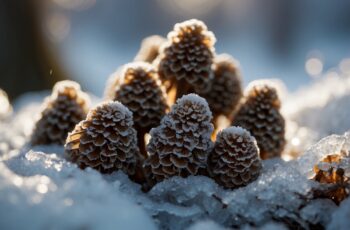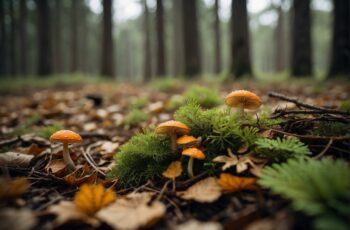Venturing into the lush landscapes of Oregon, you’ll discover an array of wild edible mushrooms, an intriguing component of the state’s vast biodiversity. Foraging for mushrooms offers a chance to connect with nature and enjoy Oregon’s outdoors, while also providing an opportunity to add wild, natural flavors to your culinary adventures. With an estimated 10 to 20% of mushroom species in North America being edible, Oregon’s forests are a treasure trove for enthusiasts and culinarians alike.
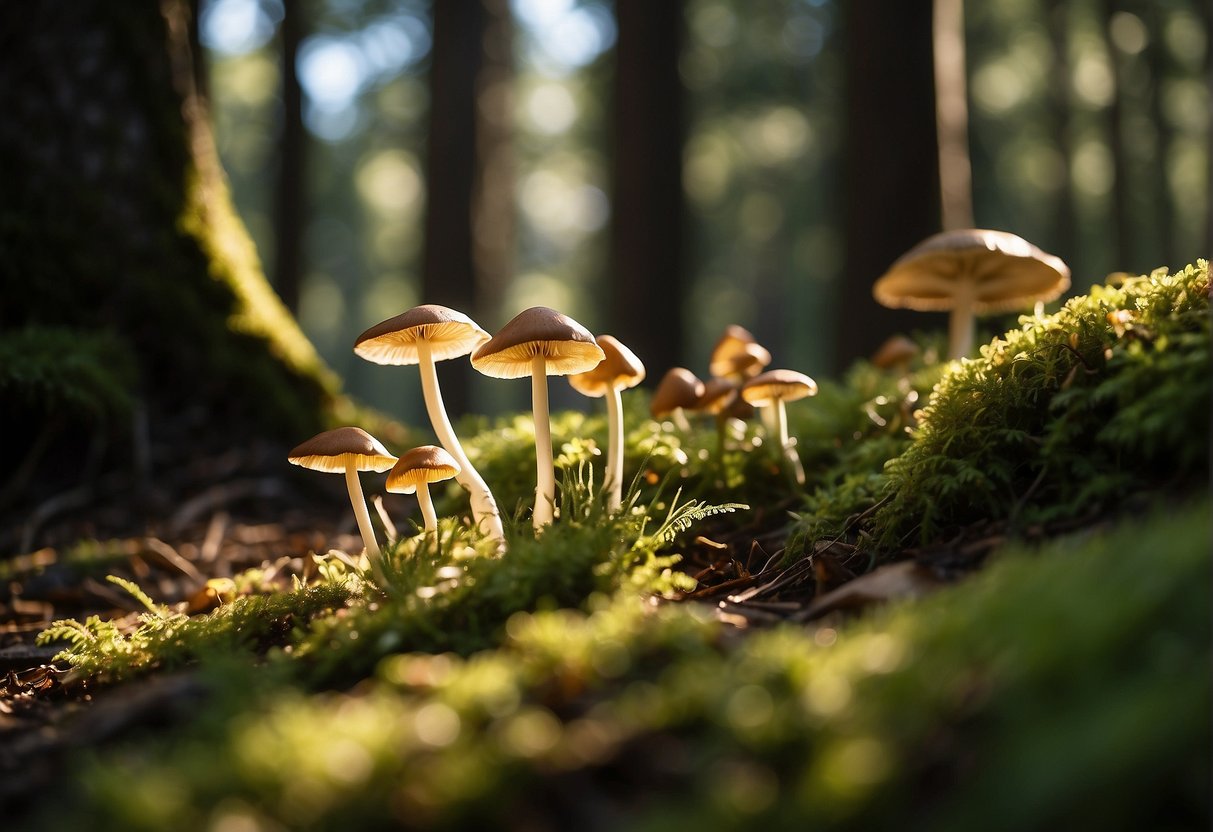
When you set out to forage, you’re participating in an age-old practice that requires knowledge and respect for the environment. Identifying edible mushrooms is critical, as the distinction between a delightful meal and a dangerous mistake can be subtle. Alongside the sheer variety of mushrooms, their seasonal growth patterns and preferred habitats are also essential knowledge.
Key Takeaways
- Edible mushroom foraging in Oregon is a connective outdoor activity offering culinary rewards.
- Knowledge of mushroom identification and habitat is crucial for safe foraging.
- Understanding the role of mushrooms in ecosystems can enhance sustainable harvesting practices.
Identifying Edible Mushrooms in Oregon
Before you lace up your hiking boots and head into the forests of Oregon, it’s crucial to know how to identify edible mushrooms. This involves understanding mushroom anatomy, knowing which species are safe to eat, and being aware of local foraging regulations.
Mushroom Anatomy and Identification Tips
When looking for mushrooms, familiarize yourself with the basic parts: the cap (top), stem (stalk), gills (or pores) under the cap, as well as characteristics like color, texture, and odor. Size can vary greatly so don’t rely on it alone. Field guides or apps focused on mushroom identification are invaluable tools, and taking spore prints can help distinguish between look-alikes.
Examples:
- Cap: Can be flat, conical, or bulbous.
- Gills: May be free or attached to the stem.
- Texture: Smooth, scaly, or slimy.
- Odor: Ranges from earthy to foul.
Common Edible Mushroom Species
Oregon’s forests are abundant with edible mushrooms, such as chanterelle, morel, king bolete (also known as porcini), matsutake, lobster mushroom, hedgehog mushroom, and oyster mushroom. Each species has distinct features; for instance, chanterelles have a vibrant yellow/orange color and wavy cap edges, while morels are notable for their honeycomb-like caps.
Quick Identification:
- Chanterelle: Vibrant yellow/orange, wavy edges.
- Morel: Honeycomb cap, hollow stem.
- King Bolete: Large, with a thick stem and brown cap.
Foraging Safety and Regulations
Caution is paramount when foraging; some mushrooms are poisonous and can make you sick or worse. Always go with an experienced forager if you’re a beginner. Respect local safety guidelines and regulations, including obtaining necessary permits. Don’t forage in protected areas and be mindful not to overharvest.
Safety Checklist:
- Never eat a mushroom unless you’re 100% sure of its identification.
- Check foraging regulations and permits required in Oregon.
- Forage responsibly to maintain ecosystem health.
Remember, when in doubt, leave it out. Happy foraging!
The Role of Mushrooms in Oregon Ecosystems
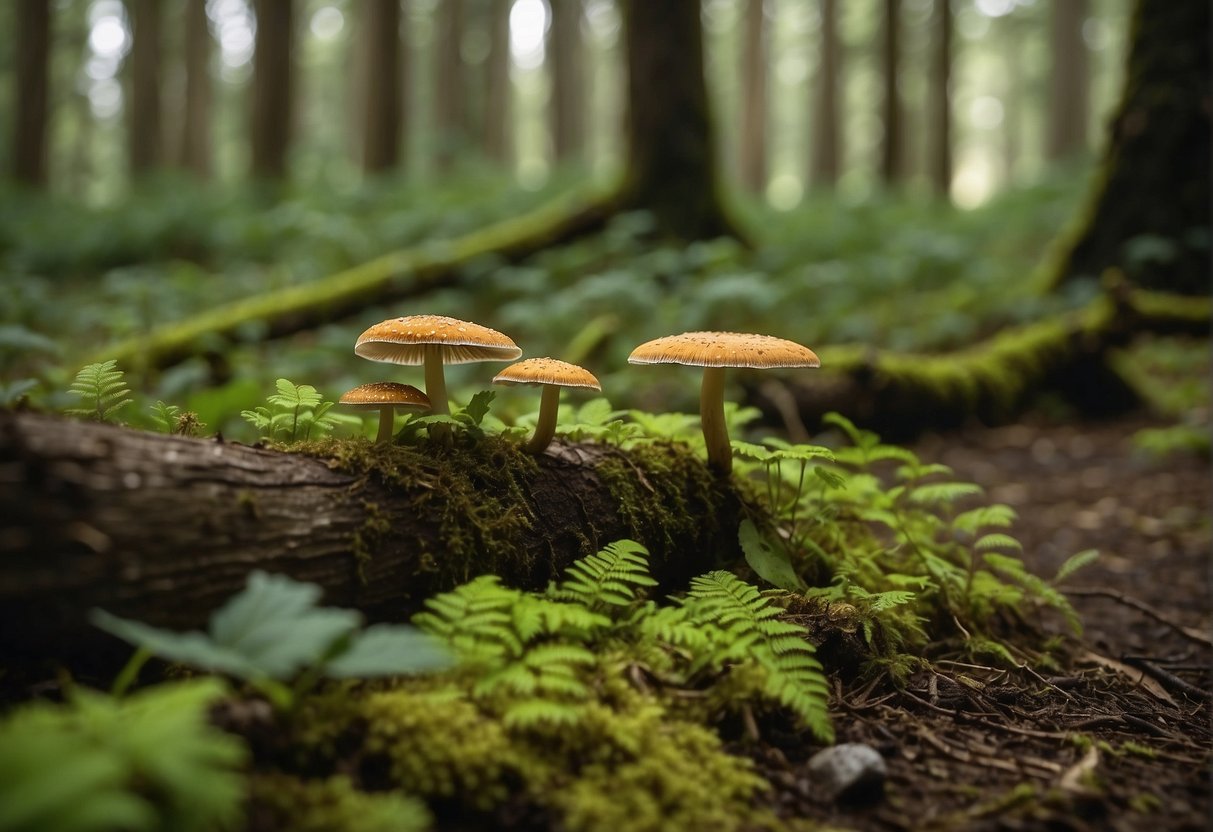
Mushrooms play a pivotal role in maintaining the equilibrium of Oregon’s forested landscapes, engaging in vital processes that affect everything from tree health to wildlife nutrition. You might find yourself marveling at the complexity invisible to the unaided eye, orchestrated beneath the forest floor.
Mycorrhizal Relationships
Mushrooms are nature’s negotiators in the Pacific Northwest, especially through mycorrhizal relationships. The symbiotic partnerships they form with trees are foundational for forest vitality. Fungi extend the roots’ reach, enhancing water and nutrient absorption, while trees repay the favor by sharing precious sugars. These interactions knit the forest together, with mycelium acting as the woodland’s internet, fostering communication and resource sharing amidst the towering pines and sturdy oaks.
Mushrooms and Wildlife
Your trek through the woods might reveal squirrels hastily foraging for mushrooms, a clear sign of fungi’s role in wildlife support. As a rich food source, mushrooms provide essential nutrients to a wide array of creatures. Even after they’ve served their purpose as sustenance, spores travel far and wide, hitching rides on fur or feathers, showcasing nature’s intricate dispersal methods which operate unseen.
Fungi and Forest Health
In the lush greenery of Oregon’s forests, the fungi work tirelessly. As crucial decomposers, mushrooms recycle decaying trees, returning nutrients to the soil and fostering new growth. They’re the ultimate recyclers on the forest floor, converting dead wood and matter back into life-sustaining soil. This isn’t just about a patch of ground; it’s about sustaining entire ecosystems across the Pacific Northwest and North America, quietly maintaining the health of our planet’s lungs.
By appreciating the roles mushrooms play, you’re not just deepening your knowledge of mycology—you’re gaining insights into a world thriving beneath your boots. When you embark on mushroom foraging, remember that these marvels are more than just a forager’s prize; they’re key to the cycle of life in Oregon’s forests.
Seasonal and Habitat Considerations
If you’re planning to forage for mushrooms in Oregon, knowing the best times of the year and the preferred habitats of edible fungi is crucial for a successful harvest.
Best Times to Forage
Spring and fall are the prime seasons for mushroom foraging in the Pacific Northwest. In May, many choice edibles start to appear, thriving from the blend of warmth and moisture spring brings. Come fall, from late September to November, as the air chills and rain dampens Oregon’s rich soils, mushroom growth peaks. During these times, the Oregon Coast can be particularly generous, offering an abundance of fungal treasures.
Spring Season:
- Morels (April to June)
- Spring King Boletus (May onwards)
Fall Season:
- Chanterelles (September to December)
- Matsutake (October to January)
- Hedgehog mushrooms (September to December)
Habitat Preferences of Edible Mushrooms
Edible mushrooms in Oregon favor diverse habitats, from the damp, mossy areas along the coast to the dense underbrush of coniferous forests inland. Look for chanterelles and boletes under the shade of pine, oak, birch, and aspen trees. Hardwoods like beech offer a haven for many species as well. Pasturelands host mushrooms like the Meadow mushroom, often found on or near grassy patches and stumps.
Keep an eye out for:
- Coniferous Forests: Fertile grounds for a variety of mushrooms.
- Hardwood Areas: Search around oak and beech trees specifically.
- Decaying Wood: Many mushrooms grow on or around dead trees and fallen logs.
From Forest to Kitchen: Preparing Wild Mushrooms
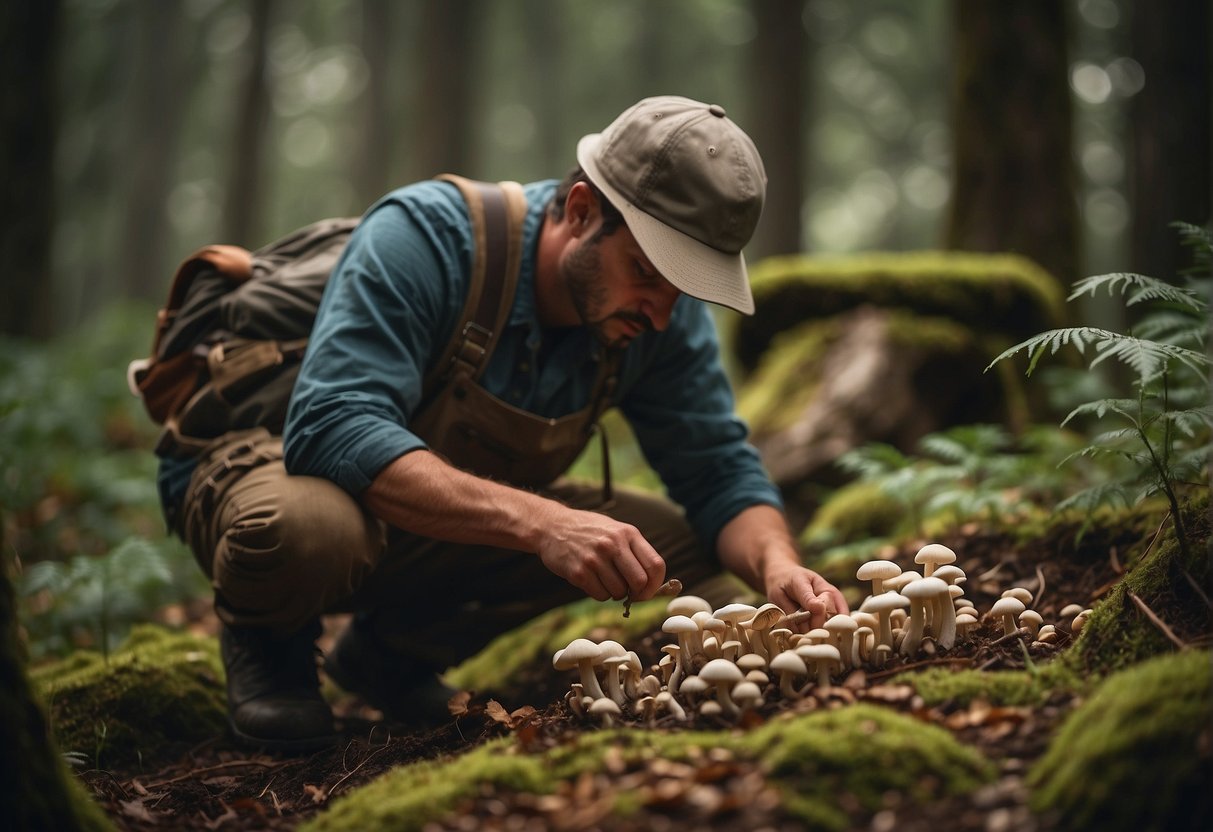
When you bring wild mushrooms like chanterelles or king boletes from the lush Oregon forests to your kitchen, it’s crucial to handle them properly to maintain their unique flavors and textures.
Cleaning and Storage Tips
Chanterelles are treasures of the forest, with their golden hue and fruity aroma. Upon returning from your foray, clean them gently with a soft brush to remove debris. Store fresh chanterelles in a paper bag in the refrigerator to keep them dry; moisture is the enemy of their delicate flavor and firm texture.
For king boletes and morels, avoid washing them directly under water as they are like sponges. Instead, wipe with a damp cloth and if necessary, use a soft brush to dislodge soil or debris. These varieties can be stored in a well-ventilated container in the refrigerator. If you’ve gathered more than you can use promptly, consider drying or freezing them to prolong their shelf life. Dry your mushrooms by stringing them up or using a dehydrator, then store them in an airtight container.
Culinary Uses and Recipes
Oyster mushrooms have a subtle anise-like taste and a velvety texture that makes them perfect for quick sautés or creamy pastas. They pair beautifully with garlic and white wine, enhancing dishes with their mild flavor.
On the other hand, honey mushrooms provide a more robust taste, ideal for enriching stews or gravies where their hearty texture won’t be overpowered.
For a rustic and satisfying dish, slice penny bun mushrooms and sauté them with butter, garlic, and a sprig of thyme. This mushroom’s nutty flavor and chewy texture hold up well to frying and roasting.
The Oregon white truffle and the Oregon black truffle bring a luxurious dimension to simple recipes. Thinly shave these aromatic gems over a finished dish to elevate it with an unparalleled earthy essence.
American matsutake, on the other hand, is known for its spicy aroma and should be cooked lightly to preserve its distinctive taste. Try it in a simple rice dish to allow its unique flavor to shine through.
With these tips and techniques, the wild mushrooms you’ve foraged will transform from forest finds into culinary gold, offering you enhancing textures and tastes that elevate any meal.

